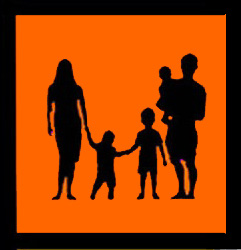Chapter 2: [Key #2] The Temporal Order; Three Different Skill Sets
By nature, social behavior is linear in fashion. That is, behavior occurs in a time sequence with one set of actions preceding the next. For purposes of our discussion, it is important to mention that all relationships eventually will proceed through three distinct stages. These stages are easily recognizable by the types of interaction that takes place within each of them.
Before we dive into a deeper discussion of how relationships function, first we need to discuss the temporal order. The word “temporal” means something relating to time. The fact is that social life exists in time. That is, social phenomena tend to occur in a time sequence. Furthermore, social experiences normally have a beginning; a middle; and an end.
Relationships are no exception. Therefore, we will couch our discussion about relationships in such a three-stage model. In the simplest terms, we can say that all relationships are first established. Then a maintenance stage occurs. And ultimately all relationships come to an end.
This conceptualization offers some clarity in helping us understand how relationships function. Plus, such temporal logic also guides how this book is structured. In order to help facilitate our discussion, the analysis of each of the three stages is done separately. Therefore, the chapters will occur in the order they are likely to happen in a person’s experience.
First, the emergence and establishment of a relationship occurs. Acquiring someone’s attention is a clear-cut activity. This acquisition period may be short, or it may occur over a period of time. Either way, this is always the first stage of any relationship.
Regardless of how long it takes to establish a relationship, specific social forces affect and govern this beginning stage of a relationship. In this initial stage, a certain set of social skills is required to successfully establish a relationship.
Getting someone’s interest, attention or affection is one thing. However, acquiring it is a completely separate activity than is keeping it. Keeping a person’s interest or their love and affection is governed by a qualitatively different set of social forces than is acquiring such attention. It shouldn’t come as a surprise when I say that keeping someone’s interest, love or affection requires a different set of social skills in order to be successful at this middle stage.
Most of us can think of a friend or family member who is able to easily attract other’s interest in potentially developing a relationship. However, they may not be as skilled at keeping people interested in being in a relationship with them. Thus, in order to better understand how these social forces govern behavior in each of these stages, we must make a distinction between these two types of social activities. After all, when we discuss each of these stages, we must clearly understand that they are two entirely distinctive components of a relationship.
Second, once you “have” someone’s interest, love or affection, it is no longer possible to “want” them. Now you have them. (If you’re thinking this means that you don’t care about that person, keep on reading.) For, by definition, in order to “want” something, you must be without it. To “want” is to desire, or to wish for, or to long for something.
Thus, once you have someone’s interest, love or affection, it is no longer possible to long for these things. You can, however, care about what happens to the interest, love or affection you do get from them. You may be concerned for example, with whether or not your interest, love or affection for that person is fading or growing. Still, managing or maintaining an interest in, or love for someone is an activity distinct from its acquisition.
The third temporal component that affects all social relationships is its end point. But as was the case with the two preceding stages, the successful resolution of a breakup requires its own set of social skills.
How many people ever bother to think about this depressing aspect of a relationship before it is staring them in the face? Not many. So most people remain somewhat ignorant about what the breakup process entails even as it is imminent. This is especially true about their first breakup. That first one tends to be the most brutal because the person suffering the heartbreak are usually trying to figure out what to do about it by trial and error; with an emphasis on error.
Those of you who have endured a breakup of any sort can attest to the fact that the end stage of a relationship can be very unpleasant. On the other hand, breaking up with someone can also feel entirely liberating. But to complicate things, a breakup can also feel both good and bad simultaneously. One day the experience may feel personally liberating, and the next day it may feel as though your life is coming apart at the seams. In some instances, such feelings of joy and sorrow can vary moment-to-moment.
After you read through the chapters from each of the three sections on these relationship stages, you will have a better understanding of what tends to occur in each of them. And ultimately, this means you will no longer be ignorant about what you need to do when you are in them.
Take away points:
– You should understand that all relationships progress through three distinct stages.
– Each of these three stages is governed by particular social forces.
– The book is structured according to this temporal order. We will discuss these relationship stages in the order they are likely to occur.
– You should further realize that in order to successfully negotiate any of the three stages, you will need a certain skill set.
